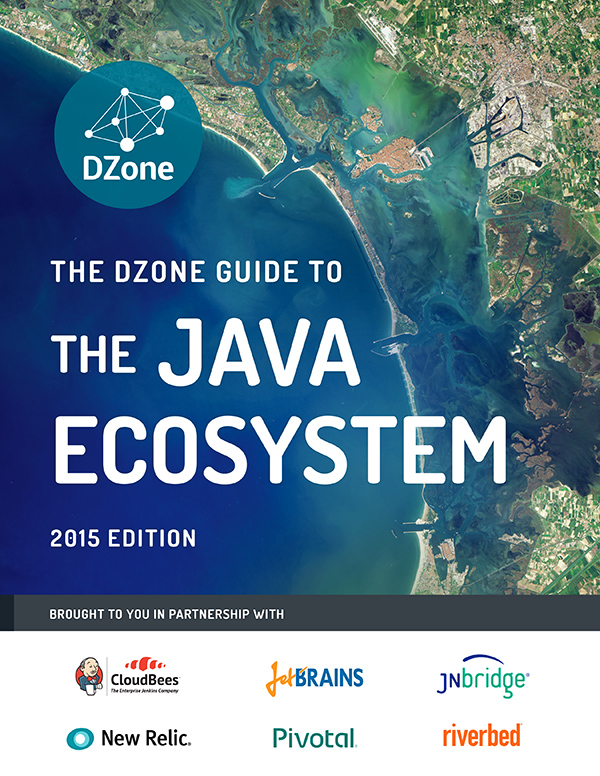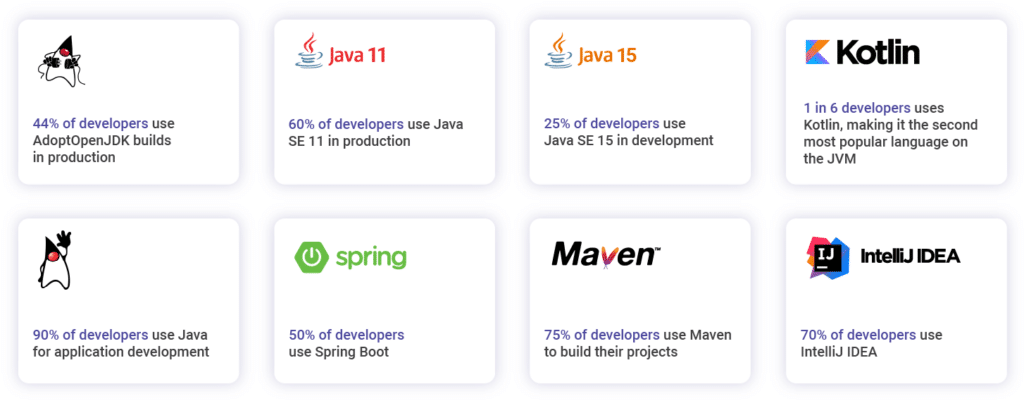The Java ecosystem is in a perpetual state of vibrant evolution, and at its epicentre, the Spring Framework continues to innovate at a breathtaking pace. For developers, staying current isn’t just a best practice; it’s a necessity for building modern, performant, and resilient applications. Recent developments have brought seismic shifts, particularly with the deep integration of modern Java features and the groundbreaking introduction of generative AI capabilities directly into the framework. This wave of Spring news is redefining what’s possible on the JVM.
From the performance revolution ushered in by Project Loom’s virtual threads in Spring Boot 3.2 to the dawn of intelligent applications with the new Spring AI project, the landscape is changing. This article provides a comprehensive technical deep dive into the most significant recent updates. We’ll explore practical code examples, discuss advanced techniques, and outline best practices to help you leverage these powerful new features. Whether you’re a seasoned Spring developer or a self-taught enthusiast navigating the Java ecosystem news, this guide will equip you with the knowledge to future-proof your skills and applications.
The Evolution of Spring Boot: What’s New in 3.x?
The release of Spring Boot 3.x marked a significant milestone, establishing Java 17 as the new baseline and fully embracing the Jakarta EE 9+ namespace. However, the innovation didn’t stop there. The subsequent releases, particularly 3.2 and beyond, have focused on integrating the most impactful features from the latest Java LTS release, Java 21.
Embracing Java 21 and Virtual Threads
Perhaps the most celebrated Project Loom news is the official arrival of virtual threads in Java 21. These lightweight, JVM-managed threads are designed to dramatically increase the throughput of concurrent applications, especially those that are I/O-bound (e.g., applications making numerous database calls or downstream API requests). Spring Boot 3.2 introduced first-class, seamless support for virtual threads.
Enabling them is astonishingly simple. By setting a single property, you instruct Spring Boot to use a virtual thread-per-task executor for handling all incoming web requests. This simple change can lead to significant performance improvements and resource reduction without requiring a major code refactor. This is a prime example of the latest Java performance news directly impacting Spring developers.
To enable virtual threads for your web server (like Tomcat), you just need to add the following line to your application.properties file:
# Enables virtual threads for handling web requests
spring.threads.virtual.enabled=trueThis configuration automatically backs Spring’s TaskExecutor with virtual threads, making it available for any component that uses it, including @Async methods and Spring MVC/WebFlux request processing. This is a game-changer for building highly scalable microservices.
Enhanced Observability with Micrometer
Modern distributed systems are complex. Understanding their behavior is critical. Spring Boot 3.x has doubled down on observability by deepening its integration with Micrometer. New auto-configurations and simplified patterns make it easier than ever to instrument your application for metrics, distributed tracing, and logging correlation.
For example, setting up Prometheus metrics is now more streamlined. With the right dependencies (spring-boot-starter-actuator and micrometer-registry-prometheus), Spring Boot automatically exposes a /actuator/prometheus endpoint. The latest Spring Boot news includes more granular control over observations through the @Observed annotation, allowing you to create custom, high-level business-oriented metrics and traces with minimal boilerplate.
The AI Revolution Hits the JVM: Introducing Spring AI

The most exciting Spring news of the year is undoubtedly the introduction of the Spring AI project. Aiming to do for AI engineering what Spring Framework did for enterprise Java, Spring AI simplifies the development of applications that incorporate artificial intelligence, particularly large language models (LLMs). It provides a unified, Spring-idiomatic API that abstracts away the complexities of interacting with different AI providers like OpenAI, Azure, Ollama, and more.
What is Spring AI?
Inspired by popular Python libraries like LangChain and LlamaIndex, Spring AI provides the core building blocks for creating generative AI applications. It’s a direct answer to the growing need for robust AI tools within the Java ecosystem, competing with and complementing libraries like LangChain4j. Key abstractions include:
- AiClient: A central interface for interacting with an LLM, abstracting the specific provider.
- Prompt and PromptTemplate: Tools for constructing dynamic, context-rich prompts to send to the model.
- OutputParser: A mechanism to convert the raw string response from an LLM into structured objects (e.g., a JSON response parsed into a Java DTO).
- Vector Stores: Integrations with databases like PostgreSQL (pgvector), Redis, and Chroma for Retrieval Augmented Generation (RAG) patterns.
Practical Example: Building a Simple AI-Powered Service
Let’s build a simple REST controller that uses Spring AI to generate a book recommendation based on a given genre. First, you need to add the necessary dependencies to your pom.xml. This example uses the OpenAI integration.
<!-- pom.xml dependencies -->
<dependencies>
<!-- Standard Spring Boot Web Starter -->
<dependency>
<groupId>org.springframework.boot</groupId>
<artifactId>spring-boot-starter-web</artifactId>
</dependency>
<!-- Spring AI OpenAI Starter -->
<dependency>
<groupId>org.springframework.ai</groupId>
<artifactId>spring-ai-openai-spring-boot-starter</artifactId>
<version>0.8.1</version> <!-- Check for the latest version -->
</dependency>
</dependencies>
<repositories>
<!-- Spring AI requires the Spring Milestone repository -->
<repository>
<id>spring-milestones</id>
<name>Spring Milestones</name>
<url>https://repo.spring.io/milestone</url>
<snapshots>
<enabled>false</enabled>
</snapshots>
</repository>
</repositories>Next, configure your OpenAI API key in application.properties:
spring.ai.openai.api-key=YOUR_OPENAI_API_KEYFinally, create the REST controller. Spring AI’s auto-configuration provides an AiClient bean that you can inject directly into your components.
package com.example.springainews;
import org.springframework.ai.client.AiClient;
import org.springframework.beans.factory.annotation.Autowired;
import org.springframework.web.bind.annotation.GetMapping;
import org.springframework.web.bind.annotation.RequestParam;
import org.springframework.web.bind.annotation.RestController;
import java.util.Map;
@RestController
public class RecommendationController {
private final AiClient aiClient;
@Autowired
public RecommendationController(AiClient aiClient) {
this.aiClient = aiClient;
}
@GetMapping("/ai/recommendation")
public Map<String, String> getBookRecommendation(@RequestParam(defaultValue = "science fiction") String genre) {
String prompt = "Please recommend one classic " + genre + " book and provide a one-sentence summary. " +
"The book must be well-known and acclaimed.";
String recommendation = aiClient.generate(prompt);
return Map.of("genre", genre, "recommendation", recommendation);
}
}With just a few lines of code, you’ve created an AI-powered endpoint. This demonstrates the power of Spring AI in democratizing AI development for the vast community of Java developers, representing a major piece of Java news.
Modern Concurrency and Performance Beyond the Basics
The latest Java concurrency news extends beyond just virtual threads. New programming models and libraries are emerging to help developers write safer, more maintainable, and highly performant concurrent code.
Structured Concurrency in Practice
Structured Concurrency, a preview feature in Java 21, aims to simplify multithreaded programming by treating concurrent tasks as a single unit of work. This model guarantees that if a task splits into multiple concurrent subtasks, they all complete before the main task proceeds. It dramatically improves error handling and cancellation, preventing thread leaks that are common with traditional `ExecutorService` patterns.
The primary API for this is `StructuredTaskScope`. Here’s an example where we fetch user data and order history concurrently. If either subtask fails, the other is automatically cancelled.

import java.time.Duration;
import java.util.concurrent.Future;
import java.util.concurrent.StructuredTaskScope;
public class UserProfileService {
// A record to hold the combined result
public record UserProfile(String userData, String orderHistory) {}
// Methods that simulate slow I/O operations
private String fetchUserData(long userId) throws InterruptedException {
Thread.sleep(Duration.ofMillis(200));
return "User Data for " + userId;
}
private String fetchOrderHistory(long userId) throws InterruptedException {
// Simulate a failure
// throw new InterruptedException("Database connection failed");
Thread.sleep(Duration.ofMillis(300));
return "Order History for " + userId;
}
public UserProfile fetchUserProfile(long userId) throws Exception {
// Use a try-with-resources block to ensure the scope is closed
try (var scope = new StructuredTaskScope.ShutdownOnFailure()) {
// Fork the first task
Future<String> userDataFuture = scope.fork(() -> fetchUserData(userId));
// Fork the second task
Future<String> orderHistoryFuture = scope.fork(() -> fetchOrderHistory(userId));
// Wait for both tasks to complete or one to fail
scope.join();
scope.throwIfFailed(); // Throws an exception if any subtask failed
// If successful, combine the results
return new UserProfile(userDataFuture.resultNow(), orderHistoryFuture.resultNow());
}
}
}This approach, part of the latest Java structured concurrency news, makes concurrent logic much easier to reason about and is a perfect fit for the microservice aggregation pattern common in Spring-based architectures.
Job Scheduling with JobRunr
For background processing, the JobRunr news offers a compelling alternative to traditional schedulers like Quartz. JobRunr is a distributed background job scheduling library that provides high-level abstractions and seamless integration with Spring Boot. It allows you to schedule fire-and-forget, delayed, and recurring jobs using simple lambda expressions.
Jobs are persisted, so they survive application restarts. The library also includes a built-in dashboard for monitoring job status. Integrating it is straightforward: add the dependency and use the `JobScheduler` to enqueue jobs.
Best Practices and Preparing for the Future
Leveraging new features is only half the battle. Adopting best practices ensures your applications remain secure, maintainable, and ready for what’s next.
Keeping Dependencies Up-to-Date
The Java ecosystem moves fast. The shift from `javax.*` to `jakarta.*` in the Jakarta EE news is a prime example of a breaking change that developers needed to manage. Regularly updating dependencies, especially Spring Boot starters, is crucial for receiving security patches and performance improvements. Use tools like the Maven Versions Plugin or Gradle’s `dependencyUpdates` task to automate checking for new versions. This simple discipline is a cornerstone of good Java security news hygiene.

Effective Testing in a Modern Stack
As applications adopt new features, testing strategies must adapt. The latest JUnit news and Mockito news continue to improve support for modern Java. When testing code that uses virtual threads, be mindful that traditional thread-based assumptions may not hold. For integration tests, especially with AI and databases, Testcontainers is an indispensable tool for spinning up real dependencies in Docker containers, ensuring your tests are reliable and isolated.
The Road Ahead: Project Valhalla and Panama
Looking forward, several exciting OpenJDK projects promise to further enhance the JVM. Project Valhalla news centers on bringing value types and primitive objects to Java, which will allow developers to create flat, dense data structures with the performance of primitives but the semantics of classes. This could lead to massive memory footprint reductions and performance gains in data-intensive Spring applications. Meanwhile, Project Panama news is simplifying the process of calling native libraries (e.g., C/C++) from the JVM, opening up new possibilities for performance-critical integrations.
Conclusion
The current wave of Spring news and Java ecosystem news is transformative. The synergy between Spring Boot 3.x and Java 21 has unlocked new levels of performance and developer productivity through features like virtual threads and structured concurrency. The launch of Spring AI marks a pivotal moment, positioning the JVM as a first-class citizen in the world of artificial intelligence. By embracing these advancements and adhering to modern best practices, developers can build applications that are not only powerful and efficient today but also poised for the innovations of tomorrow.
The key takeaway is that the pace of innovation is accelerating. The best advice from the annals of Java wisdom tips news is to remain curious and engaged. Experiment with virtual threads in an I/O-heavy service, build a small prototype with Spring AI, and refactor a complex concurrent task using structured concurrency. By actively engaging with these new tools, you’ll be well-prepared to harness the full power of the modern Java and Spring ecosystem.

